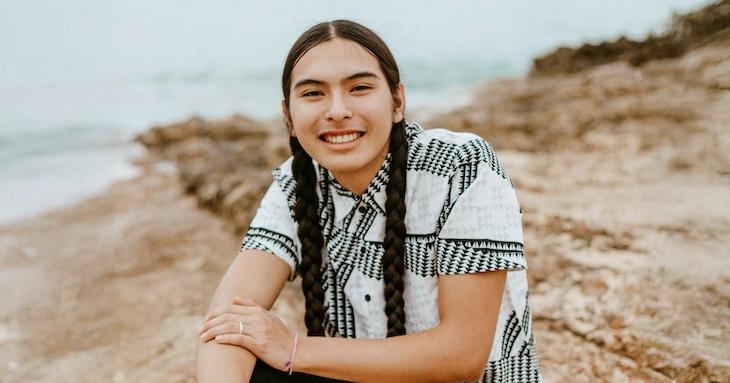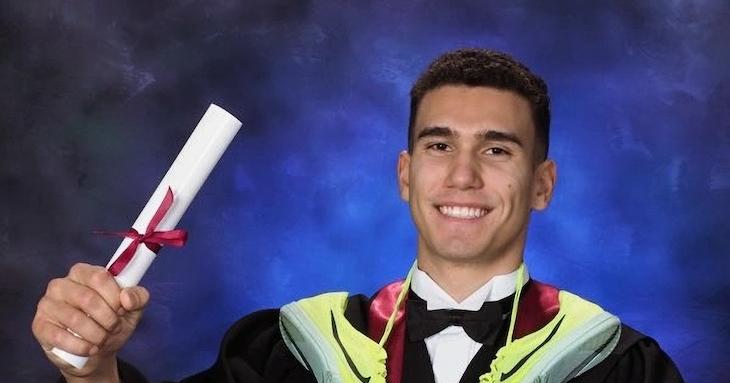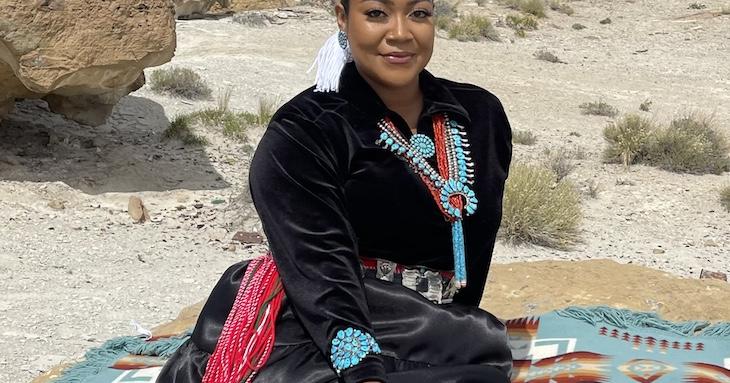-
Sterling Fox Cerda | Luiseño | Chaffey College
As long as I get to be with nature, I’ll be happy. The chaparral biome, here in the California coastal desert, is one of the only environments like it in the world. There’s unique flora and fauna, like California poppies — neon bright orange when they bloom — with cultural significance for our people as they’re medicinal and edible.
-
Abigail Reigner | Comanche Nation | Rochester Institute of Technology
My parents — both teachers — made sure I knew the value of my education and my culture. I grew up in Boyertown, Penn., far from my family in Oklahoma, but staying connected to my community in the Comanche Nation was an essential part of my life. We would often spend summers in Oklahoma, where I was immersed in our culture and traditions.
-
Marcus Alaula’ikawai Nahalea | Navajo and Native Hawaiian | Stanford University
Tótsonii nisłį´ Hawaiian bá shíchíín. Hask’ąą hadzohí éí dashícheii dóó Hawaiian éí dashinálí.
I am Navajo and Native Hawaiian — two cultures defined by their advocacy and resilience. They fight for their responsibility for the land. This value deeply shapes my identity and my career goals. -
Stefani Zaira Martinez | Village of Kotlik | University of Alaska Anchorage
I live in Alaska where I’ve spent many summers fishing with my family near Kenai. I’ve seen that here in Alaska, the health of the land and animals is directly related to the well-being of the rural population. Now, I am halfway through my studies at the University of Alaska Anchorage, where I major in chemistry. I hope to use my knowledge to bring about desperately needed improvements for the land.
-
Dylan Bauman | Muskowekwan First Nation University of Saskatchewan
As kid, I enjoyed Legos, building things, and playing in the sand and dirt. Now I get to do that full time. I finished my degree in civil engineering last spring at the University of Saskatchewan (USask), and I’m currently on a high-rise project for Graham as a project coordinator. These projects are hugely complex works of art. A big part of the job is the coordination between engineering, architects, and skilled trade workers.
-
Zabari-Obyoni Bell | Diné (Navajo Nation) | Harvard University
Although I grew up in Houston, I consider Torreon, N.M., in the Eastern Agency of the Navajo Nation, home. I spent much of my childhood in that remote rural area, playing on —and learning from — the land. It’s why I want to become a principal investigator and start my own microbiology lab on the Navajo Reservation: I want to take care of the land. After a nontraditional academic journey, I’m now a graduate student at Harvard University studying bacterial genetics, and I finally feel like I know where I’m going.
-
Hailey (Lee) Barrell | K’ai Tailé Denesuline | University of Calgary
Sometimes you have to go outside yourself to find the things closest to you. While I’ve always enjoyed science — Star Trek is the best! — it’s been more of a growing awareness for me. I’m super curious about the intricate details of how biological systems work, and how this can be leveraged for good.
-
Kaleb Proctor | United Keetoowah Band of Cherokee Indians, Muscogee | Northeastern State University
I grew up in the small community of Briggs, Okla., east of Tahlequah near the Illinois River. The area is part of my family’s original allotments from the Dawes Allotment Act. My town has two of the three federally recognized Cherokees: my tribe, the United Keetoowah Band of Cherokee Indians in Oklahoma, and the Cherokee Nation of Oklahoma. Tahlequah also has Sequoyah High School and Northeastern State University, which both began as boarding schools for the area.
-
Liam A. Wrixon | Citizen Potawatomi Nation | Haskell Indian Nations University
Both my parents studied computer science, and from the moment I started school they encouraged me to pursue higher education. I grew up near Spokane, Wash., where my college journey began at Spokane Falls Community College. From there, I went to the University of Washington, then to Haskell Indian Nations University, where I am currently a senior set to graduate this spring. My major is environmental science, which is a good fit for me since I’ve always wanted to study something within biology. Environmental science provides a good overview while being interesting and impactful.
-
Matilda Anderson | Sicangu Lakota | University of Kansas
Never forget where you come from” is a mantra I hold dear. Even though I’ve been honored to be a 2014 Cooke Young Scholar and a 2019 Cooke College Scholar, I never want to forget where I’m from. While I currently live more than eight hours away as a student at the University of Kansas, I feel a strong pull toward my ancestral home: the Rosebud Reservation in Rosebud, S.D., where I grew up.









